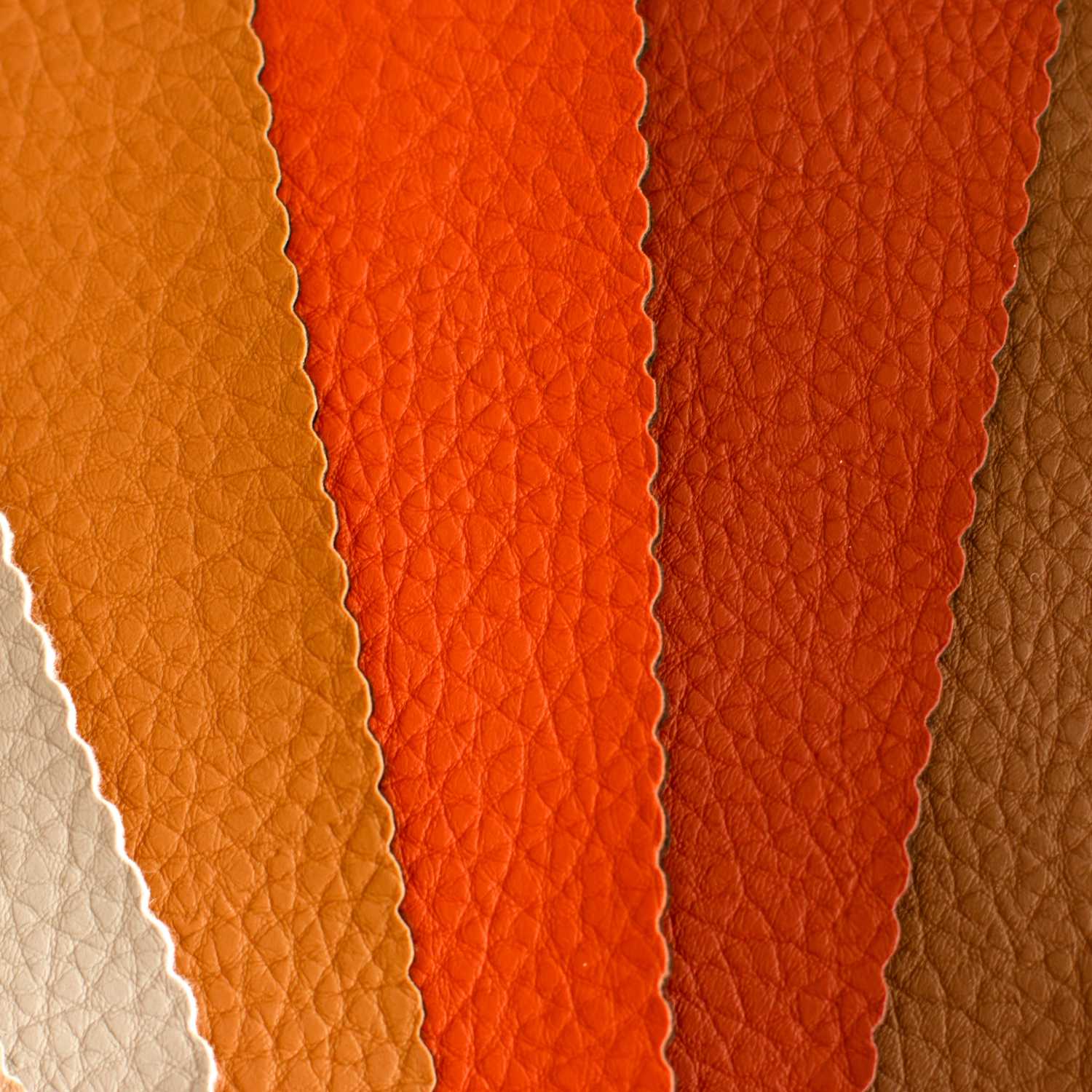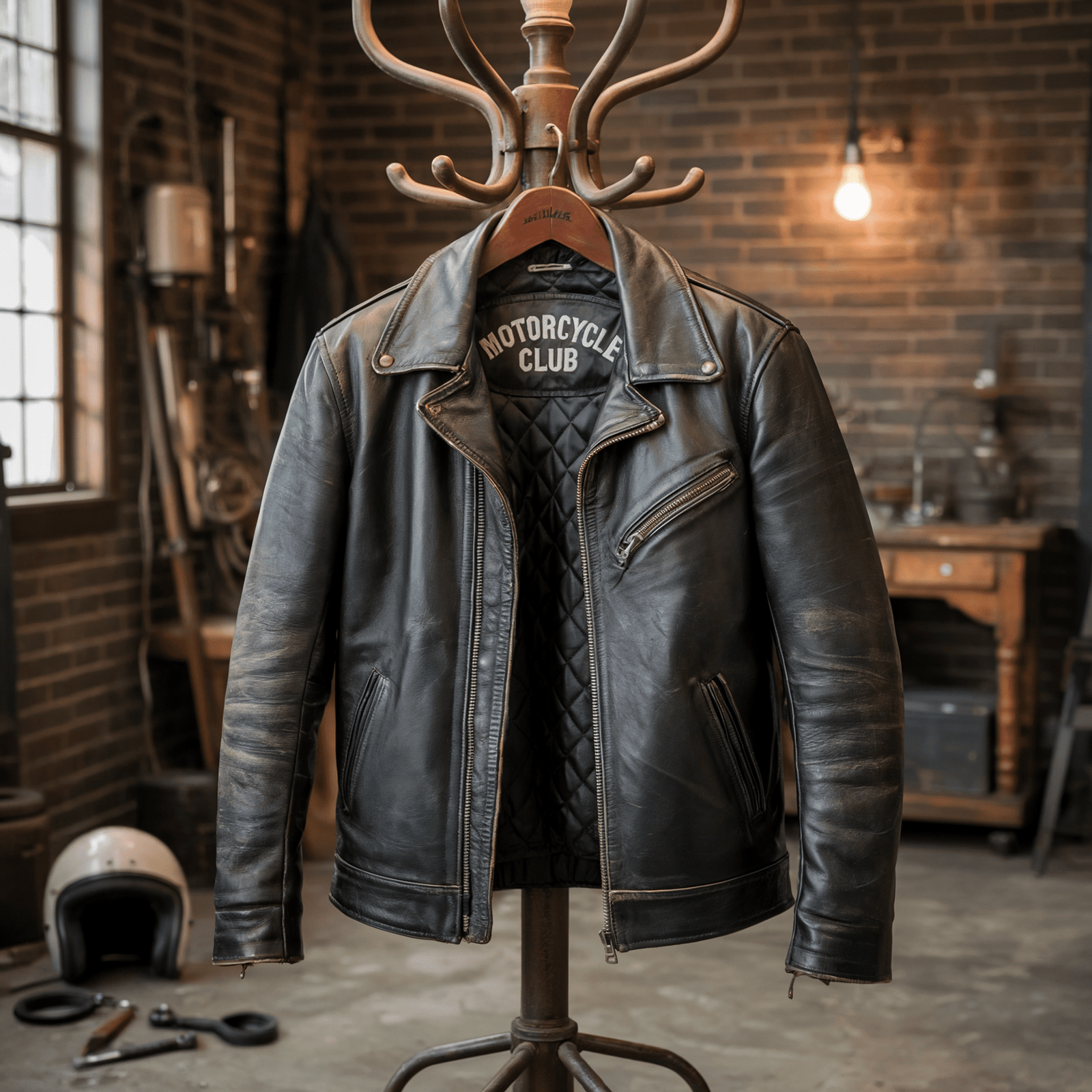Your Cart is Empty
BLACK FRIDAY SALE $25 OFF - USE COUPON BFRIDAY25 AT CHECKOUT NOW!
Menu

BLACK FRIDAY SALE $25 OFF - USE COUPON BFRIDAY25 AT CHECKOUT NOW!

What is Faux Leather- Everything You Need to Know
by Jennifer Smith January 01, 2024 9 min read
If you're interested in faux or vegan leather and looking for a comprehensive guide to help you learn everything about it, we have got your back. In this guide, we will explore the history and types of faux leathers and divulge what fake leather material is made up of. Read on to learn whether faux leather is worth buying and its potential drawbacks.
Let's get a clear understanding of all the aspects in detail.
What is Synthetic Leather and How is it Different from Genuine Leather?
Faux leather is a type of synthetic leather, also known as PU leather or imitation leather. Unlike genuine leather sourced from animal hide, faux leather material is petroleum-based and made to look like genuine leather. The best thing about imitation leather is that it is less expensive and requires minimal care. Due to being stain-resistant and scratch-resistant, artificial or synthetic leather is an ideal choice for pet owners.
History of Faux Leather
The history of faux leather started way back in the 1400s in China, with people making early versions of it from fabric. In the 1900s, during World War, two things changed when Germans turned paper pulp into the first “Presstoff.”
Later on in the 1920s, America’s Naugahyde” came into existence as versatile PVC plastic that paved the way for the widespread use of faux leather everywhere. Over decades, it evolved to PU and, later on, industries working on better and sustainable options to reduce environmental impact.
How Is Faux Leather Fabric Made?
If you're thinking about what synthetic leather is made up of and how it can be prepared. Here is the stepwise process of making faux leather:
- Base Materials: Faux leather is typically made from a base fabric or paper base.
- Coating: The base material is lined with a layer of faux leather materials, mostly polyurethane (PU) or polyvinyl chloride resin(PVC).
- Embossing: The material is often embossed with a texture to mimic the look of genuine leather.
- Coloring: Dyes or pigments are applied to achieve the color according to personal preference of custom products or for mass production.
- Finishing: Additional treatments may be used on many faux leathers for durability, sheen, or other desired characteristics.
- Cutting: The finished faux leather is cut into rolls, sheets, or specific shapes for various applications.
Is Faux Leather Real Leather? What is the Difference Between Real Leather and Faux Leather?
No, Faux leather is not real leather, as it is made from artificial materials. Here is a breakdown of the differences between pleather and leather:
Material
- Real Leather: It is made from animal hides, especially from cowhide.
- Faux Leather: Synthetic materials, like PU or PVC, are used for their production.
Cost
- Real Leather: Generally, it is expensive.
- Faux Leather: It is budget-friendly and has various prices from low to high.
Durability
- Real leather: Unlike faux leather, it is highly resistant to wear and tear and can last for decades if maintained properly.
- Faux Leather: Its durability varies according to quality. High-end PU lasts well, while PVC can crack and peel faster.
Maintenance
- Real Leather: Real leather requires regular conditioning and cleaning to maintain quality.
- Faux leather: It is easy to clean and typically requires low maintenance
Breathability
- Real Leather: It has good breathability and is best for warmer climates.
- Faux Leather: Relatively low breakability and sometimes can cause sweating.
Appearance
- Real Leather: They have a unique natural texture, and the patina develops over time.
- Faux Leather: It can be made from real leather somewhat but lacks the natural variations.
Faux Leather vs Bonded Leather
|
Feature |
Faux Leather |
Bonded Leather |
|
Animal products usage |
None |
Contains scraps of real leather up to 10 to 20% |
|
Cost |
Affordable |
Pricier than faux leather |
|
Appearance |
Looks plasticky |
Less plasticky appearance |
|
Comfort |
Less comfortable |
More comfortable than faux leather |
|
Environmental Impact |
Have environmental impact |
Also, have an environmental impact |
|
Lifespan |
Shorter than real leather |
Highly durable than faux leather |
|
Maintenance |
Low |
Low |
|
Water Resistance |
Less |
Moderate |
|
Best for |
Stylish accessories, clothing furniture, upholstery |
Budget-friendly options where aesthetically appealing are not a need. |
Advantages of Faux Leather
Despite many downsides, Faux leather has several advantages that have made it a popular choice across various industries. Here are a few of them:
- No animals are harmed in the production of synthetic leather
- Production of Faux leather requires less water than real leather
- Plant-based and recycled Faux leather offers an eco-friendly option made of organic materials.
- Compared to real leather, it is considerably cheaper, making it an affordable option for budget-conscious customers
- Faux leather is UV-resistant
- Synthetic leather products are easy to clean and maintain and often resist water and stains, making them an ideal choice for everyday use. You can clean mild stains on them by just using a damp cloth.
- They come in various colors, textures, and finishings, offering greater design flexibility and customization options.
Disadvantages of Faux Leather
Although faux leather is a great alternative and beneficial in many ways, it has some drawbacks too:
- It is less durable than real leather, making quality leather products like women's real leather jackets more valuable.
- It can cause sweating due to poor breathability
- It is a non-biodegradable product
- Unable to develop the same patina and luster as real leather
- It is prone to wear and tear and can easily be peeled or cracked
- Can not bear prolonged exposure to high temperatures
- Cause microplastic pollution
Uses of Faux Leather
Faux leather is an adaptable material that can be used in various Industries. Some common uses of synthetic leather include:
- Clothing and accessories
- Furniture
- Footwear
- Car interiors
- Electronic device case
- Home Decor items like throw pillows, wall coverings, etc
- Bookbinding
- Commercial goods like wallets, briefcases
- Industrial applications
- Sporting goods
Types of Faux Leather
PU Leather
PU is the most common type of Faux leather. It is made by coating a backing material, typically fabric or paper, with a layer of polyurethane. It is also known for its durability and soft feel.
PVC Leather
PVC is also called vinyl leather. It is made by coating a fabric with layers of polyvinyl chloride. It can have a matte or glossy look and is often used for upholstery and clothing.
Leatherette
Leatherette is another term used for synthetic leather. It refers to any type of faux leather that consists of a fabric base and plastic covering. It is non-porous and not fit for garment manufacturing. Due to good sunlight resistance, it does not fade for a long time and is often used in the manufacturing of furniture and accessories as a more affordable option to real leather.
Vegan Leather
It is a type of leather which is not made from animal products. It's gaining popularity in fashion, furniture, and accessories as a cruelty-free and more sustainable alternative to real leather.
Cost of the Faux Leather
The cost of fake leather may vary according to the quality, brand, and product type. Generally, it is more affordable than genuine leather, making it the best option for budget-conscious consumers. Prices may vary from a few dollars per yard for faux leather fabrics to higher costs for finished products like faux leather jackets, bags, wallets, or furniture.
High-quality Faux leather is often made with advanced manufacturing techniques and materials, which is why they have a higher price tag(almost $20 per yard). However, it cannot match the look and feel of real leather, which is why women's and men's real leather jackets and other leather goods are a class apart.
How to Clean Faux Leather
Cleaning faux leather clothes can be done easily at home; you need to follow the manufacturer's instructions.
If the label says don't wash it in a machine, never throw your synthetic leather cloth in a machine. If it allows, use a mesh bag to avoid wrinkling.
If the stain is slight, you can wipe it with a little warm water and mild soap. A baby wipe can also work if it is not stained badly. Make sure you have turned the garment inside out before washing. For machine wash, use a gentle agitation option. Always use cold water to rinse the faux leather, and avoid using a fabric softener.
Using a dryer can damage your leather; instead of a dryer, always air-dry faux leather.
After drying, use baby oil, olive oil, or coconut oil to prevent peeling and cracking.
Maintenance of Faux Leather
To maintain artificial leather in good condition, regularly wipe it with a damp fabric to get rid of dust and debris. Using a mild detergent and slightly hot water solution for deep cleaning is also good.
Avoid chemicals that can damage the material. Don't expose leather to direct sunlight and extreme temperatures to prevent fading and cracking. Always keep a leather conditioner to keep the material soft and prevent drying. Clean the spills immediately to prevent stains and avoid abrasive scrubbing.
For a long lifespan, follow care instructions provided by the manufacturer and consider periodic applications of a protective spray.
How to Repair Faux Leather
Faux leather or PU leather can be repaired in several ways, some of which are:
- Covering peeling or cracking with leather paint.
- Fixing minor leather with leather dye
- Sealing repairs with a leather repair kit
Impact of Faux Leather on the Environment
The impact of faux leather on the environment can be more favorable than that of genuine leather. By avoiding the use of animal hides, faux leather spares animals from being killed for leather. Likewise, compared to the water-intensive process of raising livestock and tanning hides, some fake leather production methods require less water.
However, the production of synthetic materials like polyurethane (PU) and polyvinyl chloride (PVC), commonly used in faux leather, involves the use of chemicals and fossil fuels, contributing to pollution. During the production of synthetic leather, microplastics are shed that pollute the ecosystem. In addition, PU and PVC take too much time to degrade and pollute the environment.
Efforts are being made to produce eco-friendly leather products(vegan leather) to improve the impact of faux leather on the global ecosystem.
Conclusion
Faux leather is a versatile and accessible alternative to genuine leather, offering a wide variety of applications in fashion home decor and beyond. As we have explored the crafting process, what faux leather means, is faux leather durable, and its diverse uses, it becomes evident that this synthetic material not only mimics the attributes of real leather but also presents a more budget-friendly and ethically conscious option for consumers. It is a compelling choice for those seeking style affordability and commitment to cruelty-free and sustainable alternatives.
Whether you're a fashion enthusiast, interior designer, environmentalist, or budget-conscious consumer, you can't go wrong with faux leather.
FAQs:
Is Faux Leather Better Than Real Leather?
Whether faux (synthetic) leather is better than real leather depends on your priorities and needs. Faux leather is relatively cheaper, easier to care for, and available in various colours and textures. But it is not long-lasting, environmentally friendly, and not as breathable as real leather.
On the other hand, real leather is more durable and breathable, has less environmental impact, and provides ideal support and structure for various items that need to hold their shape. However, real leather is expensive and requires more care, and their production raises concerns about animal welfare.
What Are The Cons Of Faux Leather?
- Faux leather is more susceptible to wear and tear.
- Faux leather has poor ventilation issues.
- Some types of faux leather can be stiff and uncomfortable to wear.
- They are not biodegradable.
- Have more environmental impact due to petroleum-based materials usage in production.
Does Real Leather Last Longer Than Faux Leather?
Yes, generally, real leather is more durable and has a longer lifespan compared to faux leather. Real leather acquires a unique patina over time, adding to its character and durability. However, proper care is essential to ensure durability.
How Can Someone Tell The Difference Between Real And Faux Leather?
Examining the texture is a key factor – real leather has a natural grain with variations, while faux leather often appears more uniform. Additionally, a burning test can also help you. Real leather will smell like burning hair, while faux leather will smell like plastic. Real leather has a distinct, earthy aroma, while faux leather may have a chemical or plastic-like smell. Checking for imperfections and observing how the material ages over time can also help distinguish between real and faux leather.
You can also check the originality via water absorbance. Faux leather isn't as absorbent as real leather is.
Is The Quality Of Faux Leather Good?
Faux leather is less durable than genuine leather but more enduring than bonded leather. High-quality Faux leather (PU or PVC with fabric backing) can be stable, water resistant, and even soft and breathable. However, low-grade (PU or PVC) leather can crack, peel, and feel like plastic.
What Is The Lifespan Of Faux Leather?
How long faux leathers lasts can differ based on various factors, including the quality of the material, the manufacturing process, and the care and maintenance it receives. The lifespan of faux leather also varies depending on the specific product and intended use.
What Materials Are Used To Make Faux Leather?
The core of Faux leather is commonly made from a woven fabric like polyester or cotton. This base gets a makeover with a plastic coating material such as polyurethane (PU) or polyvinyl chloride (PVC). Some eco-friendly alternatives use plant-based materials like pineapple or cactus, but these are less common.
Leave a comment
Comments will be approved before showing up.
Also in Blog | Leather Skin Shop

Types of Sleeves in a Leather Jacket
by Jennifer Smith August 24, 2025 6 min read
The different types of sleeves shape the shoulder, control the movement, and change how the leather jacket looks in motion. There are various types of sleeves, such as cap sleeves, bell sleeves, raglan sleeves, and more.

How to Get Smell Out of Leather Jacket?
by Jennifer Smith August 08, 2025 4 min read
Over time, a leather jacket can smell like sweat, mildew, or smoke. But do not worry, there are safe, proven ways to get rid of those unpleasant smells at home.

What Is A Trench Coat
by Jennifer Smith August 02, 2025 6 min read
A trench coat is a long, lightweight outerwear piece designed to protect against wind and rain. Its defining features include a double-breasted front, a belted waist, wide lapels, and often epaulets and a storm flap.
Leather Jackets for Men
Leather Jackets for Women
Accessories for Men & Women
Recent Articles
- Types of Sleeves in a Leather Jacket
- How to Get Smell Out of Leather Jacket?
- What Is A Trench Coat
- What Is A Peacoat Jacket?
- What is Polyester Fabric?
- What is Satin Fabric?
- What is Shearling Leather?
- Varsity Jacket Or Letterman Jacket? Everything You Need To Know Before Buying
- What is Semi Aniline Leather?
- What Is Cotton Fabric?
Size Chart